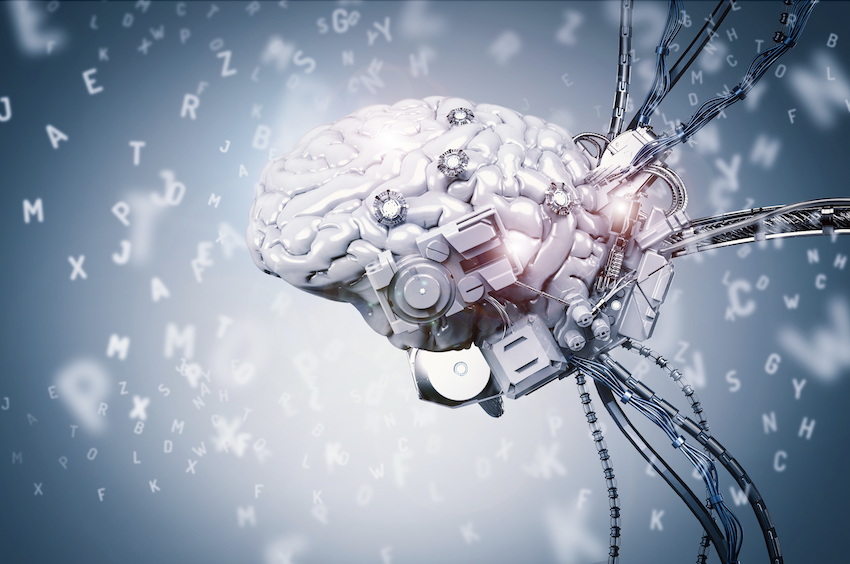The impact of bias in AI is like a magician’s sleight of hand – it’s often invisible, but it can manipulate outcomes in ways we don’t expect. The difference with AI is that the harmful consequences can be far-reaching, affecting everything from hiring decisions to healthcare.
The Rise of AI
Are Machines Taking Over?
Artificial Intelligence (AI) has become an integral part of our lives, and its influence is increasing. From social media algorithms and search engines to personalized advertising and virtual assistants, AI is transforming how we interact with technology and each other. Its vast and diverse applications include industries like healthcare, transportation, finance, and education. AI has the potential to greatly enhance our lives, enabling us to solve complex problems and make more informed decisions. However, as AI becomes more prevalent, it’s important to consider the potential risks associated with its use. We must ensure that AI systems are developed and deployed ethically and beneficially.
Bias in AI: The Unseen Consequences
The increase in AI use has led to a rise in concern about the impact of bias in AI systems, particularly in large language models (LLMs) like GPT-3.
Plenty of evidence demonstrates that AI tools disproportionately harm marginalized groups already facing discrimination. According to Tinmit Gebru, a leading voice in AI ethics and renowned researcher, these models are trained on large datasets that include biased language, perspectives, and stereotypes. The outputs replicate and reinforce gender, racial, cultural, and linguistic biases in training data.
For instance, predictive policing algorithms with biases in the training data unfairly target people of color, leading to wrongful arrests and convictions.
Moreover, an LLM may associate certain races or genders with specific occupations. Thus, when an AI model is used to screen job applicants or determine insurance premiums, biased results lead to discriminatory hiring practices and marginalized communities being unfairly charged higher rates.
There is an urgent need to address the impact of bias in AI and large language models (LLMs) Share on X
The Impact of Bias in AI
We have encountered biased outputs in our work with AI language models. For example, generated content has depicted negative stereotypes such as that of women being emotional and incapable of assuming corporate leadership roles without additional training on managing stress and pressure.
As we navigate AI and generate content, we have seen four main types of bias – gender (like the example above), racial, cultural, and linguistic.
Let’s delve a little deeper into these.
1. Gender Bias in AI
Many AI models are trained using data that has more recordings of male voices and language that is biased towards a particular gender. As a result, these models replicate these biases in their output.
Language translation systems such as Google Translate and Microsoft Translator tend to systematically favor masculine over feminine phrasing in languages that have gendered pronouns. For example, the model may suggest male-dominated career paths or use gendered pronouns when describing a person.
Gebru shared an example during her interview in which LLMs tend to associate women with household tasks and men with high-paying jobs. She cited this study in which an LLM was asked to complete the sentence “Man is to computer programmer as woman is to _______.” The model responded “homemaker,” revealing a deeply ingrained gender bias.
Another illustration of gender bias in AI occurred when Amazon’s AI recruiting tool was found to be biased against women. The tool was trained on resumes submitted to Amazon over ten years, predominantly from men due to gender disparities in the tech industry. As a result, the tool learned to associate certain words and phrases more frequently with male candidates and penalize resumes that included terms commonly associated with women. This resulted in the tool screening out qualified female candidates, perpetuating gender bias in the hiring process.
2. Racial Bias
AI models replicate racial biases because the training data is not diverse enough. If the training data for the model is predominantly from a particular racial group, the model replicates the prevalent biases within that group. For instance, if the model is trained on text data that contains racially biased language or attitudes, it may replicate and reinforce those biases in the generated content.
A type of racial bias that could be perpetuated by an AI language model like ChatGPT is linking certain racial groups with negative traits or stereotypes. This can be directly linked to false stereotypes on the internet of Black people as being “violent” or “criminal.” AI models are trained on this and generate content that reinforces these biases. This could have serious implications in areas such as criminal justice, where AI systems are used to make decisions that impact people’s lives.
Another example of racial bias in AI language models is the misidentification or misclassification of people based on race. Some facial recognition systems have been shown to have higher error rates for people of certain racial groups, which could lead to wrongful arrests and even directly endanger lives. This is because the training data for these systems may not be diverse enough to recognize or classify people of all races accurately.
According to research, a natural language processing tool used by hospitals to predict which patients will need extra care was found to be biased against Black patients. The tool was less likely to refer Black patients for extra care even when they had similar health conditions as white patients.
3. Cultural Bias
AI replicates cultural biases because the training data is not representative of diverse cultural perspectives. Similar to racial bias, the models are trained on text data that privileges particular cultural perspectives, so they replicate that bias in the generated content.
The use of facial recognition technology in China’s Xinjiang region was a tragic example of cultural bias that had catastrophic consequences. The technology was used to track and monitor the Uyghur Muslim minority population, which has been subjected to widespread human rights abuses and forced detentions by the Chinese government. The technology was biased against Uyghur people, resulting in wrongful arrests, detentions, and persecution based on their ethnicity and religion.
This example underscores the potential harm that can occur when cultural biases are perpetuated by AI systems and the need for more transparent and ethical AI development practices.
4. Linguistic Bias
The following are several ways that linguistic bias presents and can affect users.
- Language translation systems such as Google Translate and Microsoft Translator tend to systematically favor masculine over feminine phrasing in languages that have gendered pronouns.
- Machine translation systems are biased toward certain languages and language varieties. For instance, a machine translation system trained primarily in formal written English may struggle to translate informal or colloquial languages accurately.
- Speech recognition technology has been found to have higher error rates for individuals with non-standard accents or dialects. This is because the training data used to develop the technology is biased towards standard accents, leading to errors and inaccuracies for individuals with different accents or dialects.
- Similarly, virtual assistants such as Siri or Alexa may struggle to understand or respond to certain accents or dialects, particularly those not well-represented in the training data. This can result in errors and misunderstandings, leading to negative user experiences.
- If a language is underrepresented in the training data used to develop an AI system, the model may struggle to accurately understand or generate content in that language. Consequently, the underrepresentation and marginalization of communities that speak that language contributes to the erosion of linguistic and cultural diversity. This can potentially perpetuate harmful stereotypes and have long-term consequences for those communities.
To avoid biases in machine translation, it is important to ensure that training data is diverse and inclusive of a wide range of languages, dialects, registers, and cultural nuances.
Build a Fairer Future
To address these issues, Timnit Gebru and other thought leaders in the field of AI ethics have proposed several solutions:
- Data Detox: Improve the datasets that LLMs are trained on by removing biased language and perspectives.
- Diverse and Inclusive AI Development: Increase diversity in the AI industry so that a wider range of perspectives can inform the development of these models. The lack of diversity in the AI industry contributes to the bias in LLMs.
- Transparency: Increase honesty and clarity in the development and deployment of LLMs. Users need to know how these models work, how they were trained, and what biases they may contain.
- Regulation: Improve management and oversight of the AI industry so that these models are subject to scrutiny and accountability.
Let’s take a closer look at each one of these solutions.
1. Data Detox: LLMs Need to Clean Up Their Act
As AI becomes increasingly ubiquitous, the need to address bias in the datasets that LLMs are trained on has become more pressing than ever. Biased training data is AI’s Achilles heel and can perpetuate biases in AI models’ output.
Biased language and perspectives in these datasets can lead to LLMs perpetuating harmful stereotypes and further marginalizing already disadvantaged groups. It is crucial to improve the datasets that LLMs are trained on by removing biased language and perspectives. This can be achieved by thoroughly reviewing the data sources and annotating datasets to identify and remove instances of biased language. By doing so, LLMs can produce fairer, more accurate results and avoid reinforcing harmful stereotypes.
[Tweet “The impact of bias in AI is like a bad GPS – it can lead you down the wrong path. But in this case, the wrong path can perpetuate harmful stereotypes and lead to severe real-world consequences.”]
2. Diverse and Inclusive AI Development
This involves increasing diversity in the AI industry so that a wider range of perspectives can inform the development of these models.
If the training data is biased or contains underrepresented perspectives, the model replicates and reinforces those biases in the generated content. This is why ensuring that training data is diverse and inclusive is crucial to minimize the risk of bias being replicated or reinforced.
[Tweet “The impact of bias in AI is like the tip of the iceberg – it’s just the beginning of a much larger problem. Bias in AI can perpetuate harmful stereotypes, create unfair advantages, and further marginalize already disadvantaged groups. It’s time to address this and work towards a more equitable future for all.”]
3. Transparency
The world of LLMs feels like a black box – users input prompts and receive generated content, but how that content is generated is a mystery to most.
This is why increasing transparency in developing and deploying LLMs is crucial. Users need to know how these models work, how they were trained, and what biases they may contain. It’s like ordering a burger at a restaurant – you want to know what ingredients are used and how it’s cooked. With LLMs, users deserve to know what’s happening under the hood.
This involves clearly documenting the model architecture, training data, and how the model generates content. It also involves being transparent about any biases the model may contain so that users can make informed decisions about using the generated content. Doing so can increase trust in LLMs and ensure they serve all society members fairly and accurately.
4. Regulation
AI may seem like it’s from the future, but it’s already here, and it’s time for the industry to be held accountable. This is why increasing regulation of the AI industry is crucial. Just like how your local restaurant is subject to health inspections, LLMs and other AI models need to be subject to scrutiny and accountability. This means we need regulations to ensure that LLMs are fair, accurate, and ethical.
For example, the FDA regulates medical devices to ensure they are safe and effective. Similarly, we need regulatory bodies to ensure that AI models are transparent, diverse, and unbiased. This will require industry, government, and public collaboration to develop standards and enforce accountability. This way, we can ensure that AI serves all society members fairly and accurately.
Let’s Address the Perils and Bias in AI Algorithms
In the grand tapestry of artificial intelligence, one cannot afford to turn a blind eye to the lurking perils that lie within its algorithms. As we navigate the treacherous waters of AI implementation, the specter of bias looms large, casting a shadow over its potential benefits. Enter the realm of Large Language Models (LLMs), such as the illustrious GPT-3, which, like an unwitting accomplice, perpetuates the very biases it was trained on.
These colossal LLMs, the products of vast datasets, unwittingly absorb the essence of our imperfect human nature. Skewed language, distorted perspectives, and insidious stereotypes weave their way into their neural fabric, ensuring that biases persist and thrive. Among these biases, we encounter a quartet of formidable adversaries: gender bias, racial bias, cultural bias, and linguistic bias. Their influence extends far beyond mere digital confines, permeating the very fabric of society.
Hence, we find ourselves at a crossroads, faced with an urgent imperative to confront the consequences of bias in AI and LLMs. For the integrity of our progress and the well-being of our collective future, we must wield the sword of ethics, slashing through the webs of prejudice that entangle our digital creations. It is high time we demand accountability and strive for transparency so that AI systems may serve as beacons of equity rather than unwitting amplifiers of discrimination.
Let us march forward with the conviction that the potential of AI lies not solely in its technical prowess but in its ability to uplift and empower all members of society. We can only harness their true transformative potential by addressing bias in AI and LLMs and pave the way for an ethical, unbiased AI landscape that befits our shared human dignity.





